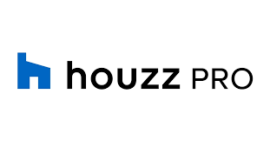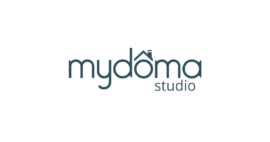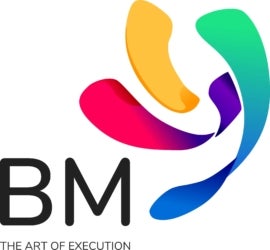
This is a comprehensive list of the best interior design project management software. Use this guide to compare and choose the best software for your business.
Choosing interior design project management software is a complex process. Not only do you need top-notch project management functionality, you also need features specific to interior design such as creating idea boards and generating proposals for clients.
On this page, we investigate some of the best interior design project management software and examine their features, pricing, pros and cons.
Jump to:
Almost no interior design software does absolutely everything, so it’s important to weigh the most important features for your needs. Here are some features to keep an eye out for while you shop for your next interior design project management software:
| Design visualization tools | Mobile app | Product clipper tool | Free plan or trial | Pricing | |
|---|---|---|---|---|---|
| Houzz Pro | Yes | Yes | Yes | Free trial | $99 per month |
| monday | No | Yes | No | Both | $8 per month |
| Gather | Yes | No | Yes | Free trial | $199 per month |
| Mydoma | Yes | Yes | Yes | Free trial | $49.92 per month |
| Studio Designer | Yes | Yes | Yes | Neither | $54 per month |
| Binary Management | No | No | No | Free trial | $10 per month |
| Indema | Yes | No? | Yes | Neither | $70 per month |
| ClickUp | No | Yes | No | Both | $5 per month |
The Houzz website attracts more than 40 million users per month — most of which are looking for design project inspirations — making it an excellent place to attract potential clients. This is why it also made our list of the best project management software for architects and the best construction project management software. However, you do need to be willing to pay for the most expensive plan (the Ultimate tier) to get access to Houzz’s lead generation program, which might be out of budget for some businesses. But if you’ve got the cash, Houzz offers a unique way to connect with potential clients that other interior design project management software doesn’t replicate.
A 30-day free trial is available for all plans.

If you find niche interior design project management software too limited, then you might want to check out monday work management, which we also named one of the best design project management software of the year. This general purpose project management software is extremely flexible and customizable, featuring robust automations and reporting. However, the downside is that it lacks certain interior design tools, such as the ability to create mood boards and turn them into design proposals.
For more information, see the full monday work management review.

If you’re struggling to keep track of item specifications and vendor contact information for highly-complex projects, Gather is built to solve these problems. The platform includes features such as advanced search, a contact database and a digital resourceful library to make it easy to store and sort critical project information. It also includes a built-in chat tool that centralizes communication and sets it apart from other dedicated interior software.
A free 14-day trial is available.

Mydoma has a unique feature called embeddable design packages, which let clients purchase services right from your website. Simply decide what services you want to include (such as a design consultation) and embed it directly on your website to start generating new leads. It also includes plenty of other interior design-specific features, including project templates, design boards, and a product clipper tool.
A free trial is available.

Studio Designer is one of the staples of the interior design industry, boasting more than 30 years of history and over 14,000 designers. It is designed to be a one-stop shop for all your designing needs, including native accounting and billing tools (but does not integrate with QuickBooks, which might frustrate your CPA). Its robust design planning and reporting tools are meant for experienced designers who are willing to master the learning curve to use a powerful tool.

If you are a small firm just starting out and want interior design project management software that won’t break the bank, definitely look into Binary Management. Its plans start at just $10 per person per month and include tools for costing, planning, tracking, and reporting. However, it lacks many of the visualization and design features that alternatives have, so don’t expect mood boards or 3D models from this affordable software.

On the other hand, if you belong to a larger design firm that’s looking to upgrade its interior design project management software, you should consider indema (which stands for “interior design management”). The platform is packed with features created with interior design clients in mind, such as a background remover tool for creating mood boards and a browser clipper tool that imports any product on the internet into indema.
Indema only offers one single pricing plan, which charges per individual user. It costs $70 per month billed annually, $72 a month billed quarterly and $75 a month billed monthly.
Indema also offers four levels of support for onboarding:

If all the plans on this list still sound too expensive to you, consider ClickUp — which also made our list of the best creative project management software. This general purpose project management app features a forever-free plan, with paid plans starting at just $5 per person per month, making it the most affordable option on this list. The trade off is that it lacks niche features meant for interior design specifically, such as design mood boards and 3d rendering.
For more information, see our full ClickUp review.
Dedicated interior design software incorporate multiple tools to help you create and present room designs, including product clippers, background removers and both 2D and 3D rendering technology. Many also include the ability to turn an idea or mood board directly into a proposal and then into an invoice once the client approves the project.
The best interior project management software will let you create invoices and bill clients directly in the system so you can keep track of your costs and payments in one place. It should also integrate with popular accounting software such as QuickBooks or include its own native accounting tools to help you (and your accountant) with bookkeeping.
Interior design projects are complex, which is why interior design software should include features for task and project management. You should be able to set due dates, assign tasks to employees and contractors and view important project due dates on a calendar or Gantt chart to help you visualize deadlines.
Interior designers must constantly collaborate with clients, vendors and contractors. Interior design project management software should make it easy to invite these external collaborators and to set permissions so that they only see what they want you to see. Some software cap the number of guests that you can invite, so pay attention to the fine print.
Managing costs is essential for any interior design businesses and robust reporting features can help you stay on top of your finances. Interior design software should provide pre-made stock templates as well as the ability to generate custom reports. Data should flow directly from other areas of the tool into the reporting function and update frequently to provide real-time insights.
Choosing an interior design software is a complex (and often expensive) decision. As you can see from the chart at the top, few interior design project management platforms provide absolutely every possible feature. The key is identifying which ones are the most important to your needs early on in the search process and letting those guide your decisions. Make a list of your must-have qualities and your nice-to-have perks, then use that to narrow down your options.
Another thing to note is that the availability of free trials and free accounts vary widely amongst interior design software. Take advantage of all the free trials that you can and consider scheduling demo calls with all of your top choices (whether or not they offer a free trial). Using interior design project management software can often be complicated, so a guided demo is the best way to get your questions answered about whether or not the software can do what you need it to.
If you’re not totally sold on a specific interior design project management software yet, consider signing up for a month-to-month subscription first so that you can test the software for a longer period of time. That way, you won’t be locked into an annual contract should you decide you want to switch to another service.
We reviewed these interior design project management software based on a number of criteria, including pricing, ease of use, user interface design and the difficulty of the learning curve. We also weighed additional features such as design renderings, product clipper tools, invoicing and accounting tools, mobile apps and reporting. We evaluated these platforms by consulting demo videos, user reviews and product documentation.